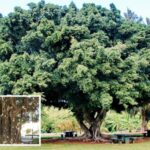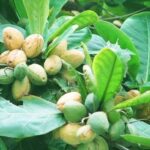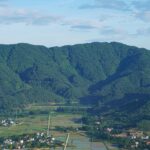Wild vegetables, or forest herbs, have long been an integral part of the indigenous cuisine in Vietnam. These vegetables offer a unique flavor profile, distinct from the commonly found vegetables in the lowlands. They are the key ingredients in many famous specialties, which city dwellers rarely have the opportunity to experience. One of the most prominent wild vegetables is Rnhao, a specialty of Dak Nong province.

Rnhao, also known as Yao
Rnhao, or Yao, is a wild plant that usually grows under the canopy of larger trees or climbs onto other trees. Its leaves resemble those of the Bep plant, with a smooth surface similar to betel leaves. When consumed, Rnhao leaves offer a mild sweetness and an appealing, distinctive aroma.
Local people share that Rnhao leaves are essential in the traditional “canh boi” soup of the indigenous tribes. This soup is typically cooked in copper or iron pots for large family gatherings. The ingredients include a variety of seasonal wild vegetables combined with meats such as pork, beef, or chicken. Depending on personal preference, individuals can choose different ingredients to create a unique flavor for their dish.
However, without Rnhao leaves, canh boi loses its allure and distinctive taste. These leaves can be used fresh or dried. The ethnic groups in Dak Nong often enjoy canh boi in their daily meals, so they keep Rnhao leaves in their kitchens. They let the leaves dry naturally until they curl, preserving them for future use.
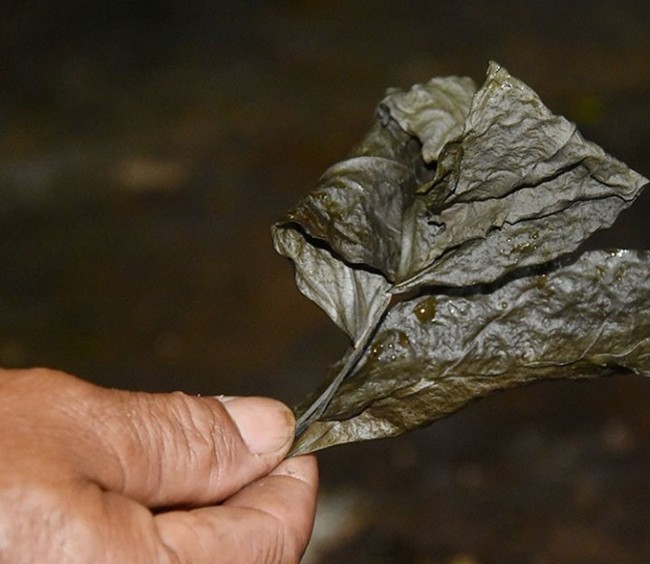
Rnhao Leaves can be Used Fresh or Dried
The usage of Rnhao leaves is quite unique. The locals in Dak Nong usually combine 5-7 Rnhao leaves with rice and grind them together. The finer the rice is ground, the sweeter and more delicious the canh boi becomes. When preparing canh boi, after the water boils, the cook adds the meat, vegetables, and seasonings. Finally, the ground rice and Rnhao leaf mixture is dissolved in water and slowly poured into the soup while continuously stirring to achieve perfection.
Ms. Lich, a resident of Krong No district in Dak Nong, shared, “Rnhao usually grows wild in forests or by rivers, ponds, and lakes. This plant has a challenging name to pronounce, which many find amusing. For the indigenous people, Rnhao leaves have been an essential ingredient in their rustic specialties for a long time, while city dwellers rarely know about it.”
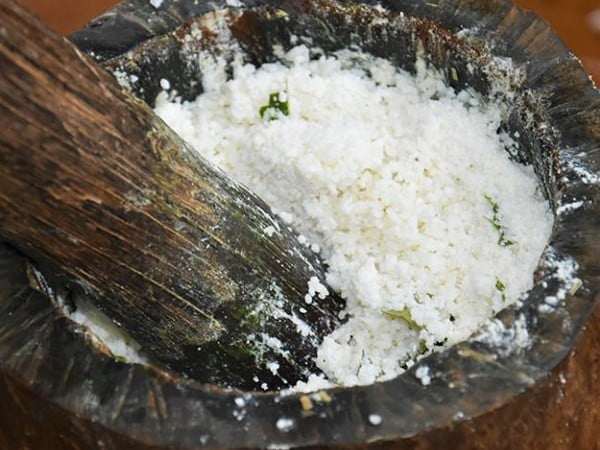
Grinding Rnhao Leaves with Rice
In some restaurants in Dak Nong, canh boi has been added to the menu to offer guests from other regions. Many diners who have tasted this soup express their delight and wish to buy Rnhao leaves to bring back to the city and cook themselves. According to the locals, while Rnhao leaves can be used in various soups, canh boi is the perfect choice to showcase their unique flavor.
At some rural markets, ethnic groups have started selling freshly picked Rnhao leaves. They offer both fresh and dried leaves, perfect for sending to children living away from home or to other provinces for curious food enthusiasts. From a wild leaf unknown to most, Rnhao has become a beloved specialty among the ethnic community in Dak Nong, thanks to its distinctive and exotic flavor, captivating many from the very first taste.
“Vinamilk Inspires Sustainability Through Vietnam’s Premier Robotics Competition for Students”
Vinamilk is proud to be a part of the ROBOTACON WRO 2024 journey, the largest robotics competition for youth in Vietnam. This year, with a focus on Earth and sustainability, Vinamilk Green Farm is taking the competition to new heights with a range of exciting activities. The event serves as a platform to select the brightest young minds in robotics to represent Vietnam in international competitions in Singapore and Turkey.
The Ultimate Guide to Visiting the Land of Beauty Queens: A Journey to Vietnam’s Most Enchanting Scenery and Mouth-watering Cuisine.
Haiphong is a vibrant city nestled in the enchanting Bay of Tonkin, boasting a unique blend of picturesque landscapes and delectable cuisine that captivates visitors from near and far. Known as the “City of Scarlet Flame Trees,” Haiphong’s allure lies in its ability to enchant travelers with its natural beauty and a plethora of mouthwatering delights.


























